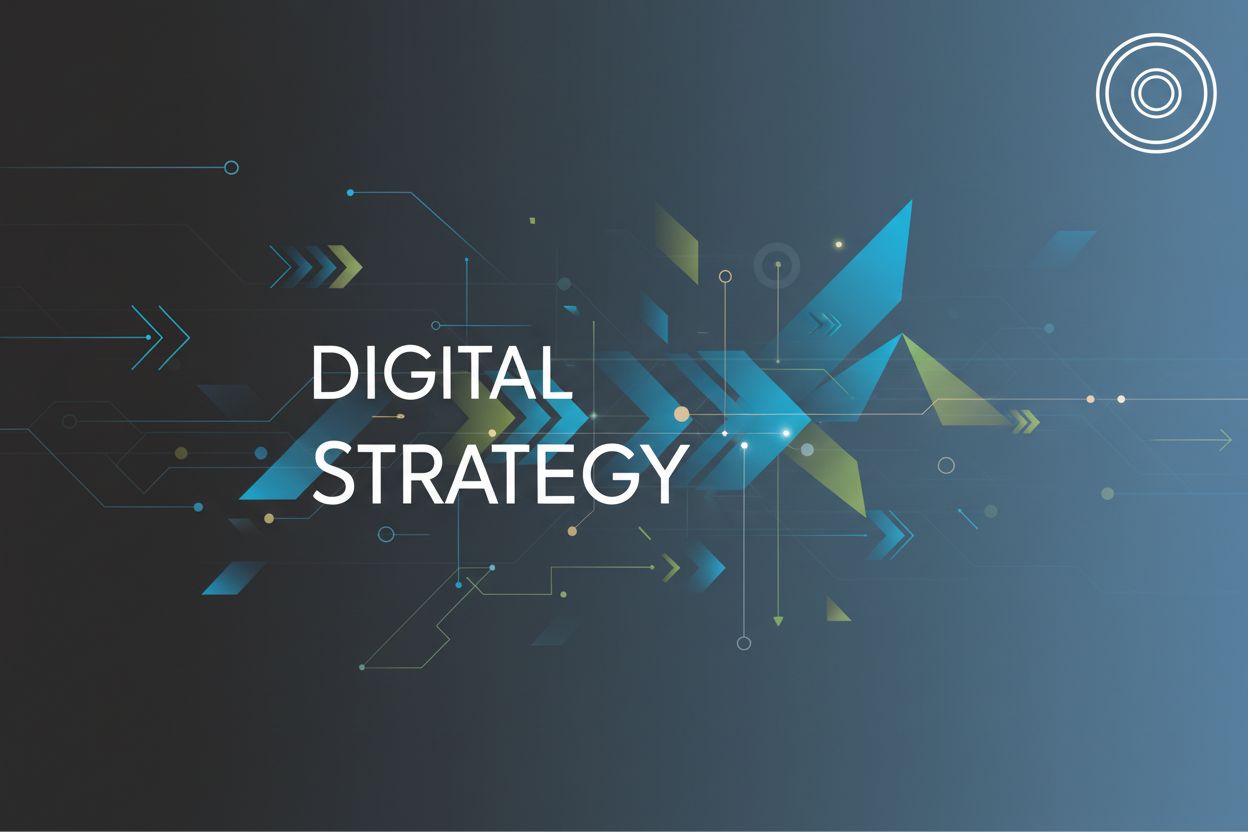How to Develop a Digital Transformation Strategy
TL;DR
Understanding the Foundation of Digital Transformation
Isn't it wild how quickly things change? Just a few years ago, "digital transformation" felt like a buzzword. Now? It's kinda the only way businesses survive.
So, what is it? Digital transformation is more than just slapping some new tech onto old systems. It's about fundamentally rethinking how your business works, from top to bottom.
- It's about integrating digital technology across all areas of a business. We're talking operations, marketing, sales, even HR.
- Digital transformation means fundamentally changing how you operate and deliver value to customers. Like, actually changing stuff, not just tweaking it.
- It's about reimagining your business model using technologies like cloud computing and ai. Think how netflix killed blockbuster, or how tesla is making traditional car companies sweat.
Think of a digital transformation strategy as your GPS for this journey. Without it, you're just wandering in the digital wilderness.
- It provides a clear roadmap for all your digital initiatives, so you're not just throwing money at random shiny objects.
- It aligns tech investments with your overall business objectives. This means that the money you are spending on new technology is actually helping your company meet its objectives.
- It helps you navigate the complexities of digital transformation and prioritize resources. Trust me, things can get messy real quick if you don't have a plan.
Remember when everyone was scrambling to move everything online? Yea, that was fun.
A digital transformation strategy is a detailed plan for using digital solutions to improve the physical aspects of your business across engineering, manufacturing, and service. Digital transformation(DX)is, in and of itself, a broad business strategy. Developing a roadmap for short- and long-term digital transformation, guided by business outcomes, not technology, is the essential foundation - PTC.
- The pandemic accelerated digital adoption like crazy. No choice, really.
- Suddenly, customer interactions shifted dramatically online. Like it or not, digital became the primary way to connect.
- Now, digital transformation is a necessity, not a luxury. If you're not evolving, you're getting left behind.
So, that's the foundation. Now that we've covered the basics, let's get into why a digital transformation strategy matters even more than you think.
Key Steps to Building Your Digital Transformation Strategy
Alright, so you're staring down the barrel of a digital transformation. Feeling overwhelmed yet? Don't sweat it; even just getting started is half the battle.
Think of building your digital transformation strategy like building a house. You wouldn't start hammering nails without blueprints, right? Here's the foundation you need:
Define Your Business Objectives: It sounds obvious, but really nail this down. What are you trying to achieve? Is it boosting customer engagement, streamlining operations, or entering new markets? All your digital efforts need to ladder up to these goals. And, hey, don't just say "increase sales." Be specific! Aim for a 15% increase in online sales within the next year, or something measurable like that.
Assess Technological Maturity and Market Conditions: Take a hard look at what you've got and what your rivals are up to. What tech are you already using? Where are the gaps? What are your competitors doing that's working or failing? Maybe you're still using an on-premise CRM while everyone else is in the cloud. Or perhaps your website looks like it's from 2005. Identify these weaknesses.
Determine Investment Priorities: Money doesn't grow on trees, unfortunately! Where are you going to put your cash? Consider the potential roi of each digital initiative. What's the cost of not doing it? Sometimes, the cost of inaction is higher than the investment itself.
Cultivate a Digital-First Culture: This is often the hardest part. It's about getting everyone on board, from the ceo down to the interns. Foster innovation, encourage experimentation, and support continuous learning. Get your employees excited about new technologies. Make it cool to try new things, even if they fail sometimes.
Take Small, Strategic Steps: Don't try to boil the ocean all at once. Start with pilot projects and scale gradually. Learn from each initiative, and adapt your strategy as you go. This minimizes risks and maximizes learning. As businessmap.io suggests, starting small lets you scale agile transformation across the enterprise.
Assemble a Dedicated Team: You can't do this alone. Create a team with expertise in digital technologies. Empower them to drive digital initiatives and ensure effective implementation. Make sure they have the resources and support they need to succeed.
Clarify Success Metrics: How will you know if you're winning? Define key performance indicators (kpis) and measure progress and outcomes. As businessmap.io also notes, setting specific success metrics helps track progress and enables prompt action when needed.
Embrace Experimentation and Learning: Digital transformation is a journey, not a destination. Encourage trial and error, foster ongoing learning, and create an adaptive approach. Be willing to pivot when things aren't working.
Let's say you're a retail chain. Maybe you start by implementing a new customer loyalty program with personalized offers based on purchase history. Or, perhaps you invest in ai-powered inventory management to reduce waste and improve efficiency.
So, now you've got a solid base to build from. Next up, we'll dive into how to make sure everyone's on board with your digital vision.
Emerging Trends Shaping Digital Transformation in 2024-2025
Okay, so, digital transformation—it's not just about throwing money at the newest gadgets, right? It's about really changing how things work, and what's coming next is kinda wild. Let's dive in, shall we?
It's not only about the tech; it's how you use it, you know? Companies are starting to look hard at their processes, like, "how can we make this less of a hot mess?" Methodologies like Lean and Six Sigma are becoming super important. Think of healthcare providers streamlining patient workflows to reduce wait times and improve patient care.
- Lean: Focuses on eliminating waste and inefficiencies in processes.
- Six Sigma: Aims to reduce variation and defects in processes.
More and more, companies aren't just thinking about profits; they're thinking about the planet, too. Digital technologies are helping them track their environmental impact and make smarter choices. For instance, retail chains are using data analytics to optimize their supply chains, reducing carbon emissions and waste.
- Data Collection: Gathering environmental data using sensors and IoT devices.
- Data Analysis: Analyzing data to identify areas for improvement in sustainability.
It's all about making business decisions that are good for the bottom line and good for the environment, which, honestly, is how it should be.
What's next? Well, it's all about making sure everyone is on board with this digital vision.
Measuring Success and Adapting Your Strategy
Okay, so you've poured heart and soul (and budget!) into your digital transformation strategy. Now what? Time to see if it's actually, you know, working.
First things first; you gotta know what "winning" looks like, right? That means establishing clear key performance indicators (kpis). Are you trying to boost customer satisfaction? Then track things like net promoter score (nps) and customer retention rates. Trying to cut costs? Keep an eye on operational efficiency and resource utilization metrics.
- It's not enough to just have kpis, though. You need to monitor progress religiously. Set up dashboards, schedule regular review meetings, and don't be afraid to tweak your approach if things aren't moving in the right direction. Maybe your initial assumptions were off, or maybe the market shifted. Either way, staying agile is crucial.
- And, of course, ensure accountability. Who's responsible for hitting those kpis? Make sure each team and individual understands their role and is empowered to make the changes needed to drive results.
Let's be real, digital transformation isn't a set-it-and-forget-it deal, it's more like a Tamagotchi you have to constantly feed and care for, or it dies.
Think of digital transformation like learning a new language, it's not a one-time project you complete and erase.
- It's an ongoing journey, not a one-time project. The digital landscape is constantly evolving, so your strategy needs to evolve with it. This means regularly reassessing your objectives, evaluating emerging technologies, and adapting your approach as needed.
- Which means you gotta embrace change. Be willing to experiment with new ideas, learn from your mistakes, and stay ahead of the curve.
- "But how do I stay ahead of the curve?" i hear you ask. Well, attend industry conferences, read up on the latest trends, and network with other businesses who are also on the transformation train.
The thing is, digital transformation is a marathon, not a sprint. It requires a long-term commitment, a willingness to adapt, and a relentless focus on delivering value. So buckle up, stay curious, and enjoy the ride!





